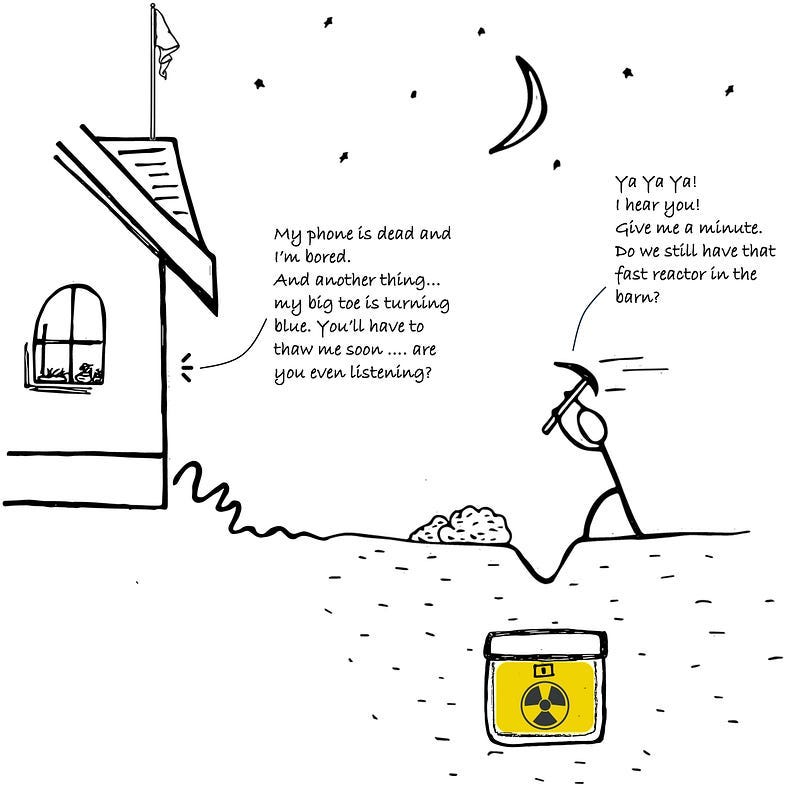The possibility of retrieving nuclear waste from a geological repository
the value of retrievability | obsticles involved | costs | safety.
This reading is part of a series: Nuclear Waste Disposal
The design concepts of reversibility and retrievability are viewed as necessary in constructing a geological disposal. Both serve different purposes. Both aim to solve socio-technical problems.
There is a common realization that the nuclear community has learned the hard way over the past several decades that the problems that nuclear energy poses are more than just technical. In fact, the major hurdles are societal. Reversibility and retrievability are aimed to address some of these hurdles.
Below is a discussion on the concept of retrievability. A discussion on the concept of reversibility can be found here: (link)
For a more detailed treatment of the ideas discussed here, please look at the excellent report of the Nuclear Energy Agency — “Reversibility and Retrievability (R&R) for the Deep Disposal of High-Level Radioactive Waste and Spent Fuel — Final Report of the NEA R&R Project (2007–2011)”. (link)
Why make the waste retrievable?
Retrievability offers the ability to recover waste once it has been placed in a repository. Having the option of retrievability without undue costs is considered a requirement for both technical and social reasons.
Technical Reasons:
Despite the best efforts of designers and builders, unanticipated events can happen before the final closure that may impact the repository’s long-term performance. At that point, the ability to consider multiple choices, including retrievability, could be regarded as an advantage [1].
Before closure, the ability to retrieve can aid in the recovery of damaged or malfunctioning containers. Close monitoring during this time and keeping only the best functioning containers can help ensure long-term safety [1].
The need for retrievability has already been demonstrated. At the Waste Isolation Pilot Plant (WIPP), a geological repository for transuranic waste from nuclear weapon manufacturing, the retrieval of waste packages has occurred on two occasions because of quality concerts — one required by the EPA and the other by the implementers themselves [2].
At the Asse mine — a geological repository in Germany for low and intermediate-level radioactive waste, consideration of retrievability has shown considerable difficulties that could be encountered if such a scenario is not preplanned [3].
Social Reasons:
Retrievability is important on the grounds of intergenerational fairness. Future generations may deem the waste a valuable resource and want to recover it, or they may find better options for disposing of it.
Disposal options like deep-seabed and deep-borehole have shown promise but have challenges that must be overcome. These two options work best when permanent disposal is predecided, as retrieval would be most likely infeasible on economic grounds. Deep-borehole disposal was rejected by Sweden on the grounds that it would make retrievability extremely difficult [4].
Retrievability is about giving future generations a choice if they wish to retrieve the package without imposing undue costs upon them.

